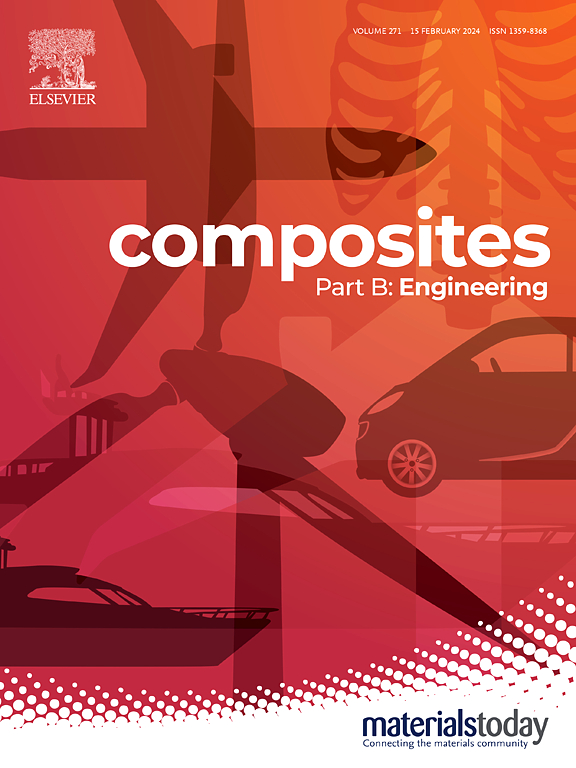Hierarchical interfacial engineering of lyocell fiber/polybutylene succinate composites for robust biodegradable natural fiber–reinforced plastics
IF 12.7
1区 材料科学
Q1 ENGINEERING, MULTIDISCIPLINARY
引用次数: 0
Abstract
Natural fiber–reinforced plastics (NFRPs) are gaining attention due to increasing concerns about environmental pollution and energy efficiency. However, low-dimensional stability due to the high water absorption of natural fibers and poor interfacial bonding between natural fibers and the polymer matrix limit their use of NFRPs. In this study, nano/micro hierarchical structures and surface plasma treatment were introduced into NFRPs with a layer-by-layer (LbL) structure to address these drawbacks. A fibrous preform combining lyocell fiber (LF) and cellulose nanofibril (CNF) was fabricated, where CNF enhanced mechanical strength and moisture stability. Biodegradable polybutylene succinate (PBS) and the preform were hot pressed to fabricate LbL-structured PBS-LF/CNF NFRPs. The interfacial compatibility between PBS and the fibrous preforms was improved by hydrophilic plasma treatment of the PBS surface, and an increase in the moisture stability and tensile strength of the NFRP was observed. Ultimately, the NFRP with the CNF binder and hydrophilic plasma treatment showed improved mechanical properties, with a modulus of 980 %, tensile strength of 430 %, and toughness of 270 %, compared with neat PBS. In addition, PBS-LF/CNF NFRP biodegraded in a compost environment. These results suggest that PBS-LF/CNF NFRP can be used as a sustainable composite material in versatile industrial fields.

求助全文
约1分钟内获得全文
求助全文
来源期刊

Composites Part B: Engineering
工程技术-材料科学:复合
CiteScore
24.40
自引率
11.50%
发文量
784
审稿时长
21 days
期刊介绍:
Composites Part B: Engineering is a journal that publishes impactful research of high quality on composite materials. This research is supported by fundamental mechanics and materials science and engineering approaches. The targeted research can cover a wide range of length scales, ranging from nano to micro and meso, and even to the full product and structure level. The journal specifically focuses on engineering applications that involve high performance composites. These applications can range from low volume and high cost to high volume and low cost composite development.
The main goal of the journal is to provide a platform for the prompt publication of original and high quality research. The emphasis is on design, development, modeling, validation, and manufacturing of engineering details and concepts. The journal welcomes both basic research papers and proposals for review articles. Authors are encouraged to address challenges across various application areas. These areas include, but are not limited to, aerospace, automotive, and other surface transportation. The journal also covers energy-related applications, with a focus on renewable energy. Other application areas include infrastructure, off-shore and maritime projects, health care technology, and recreational products.
 求助内容:
求助内容: 应助结果提醒方式:
应助结果提醒方式:


